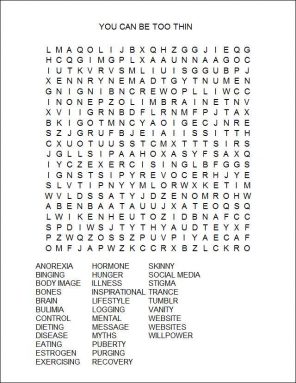You can be too thin
An eating disorder is not a dieting choice; it is a mental illness that can prove deadly
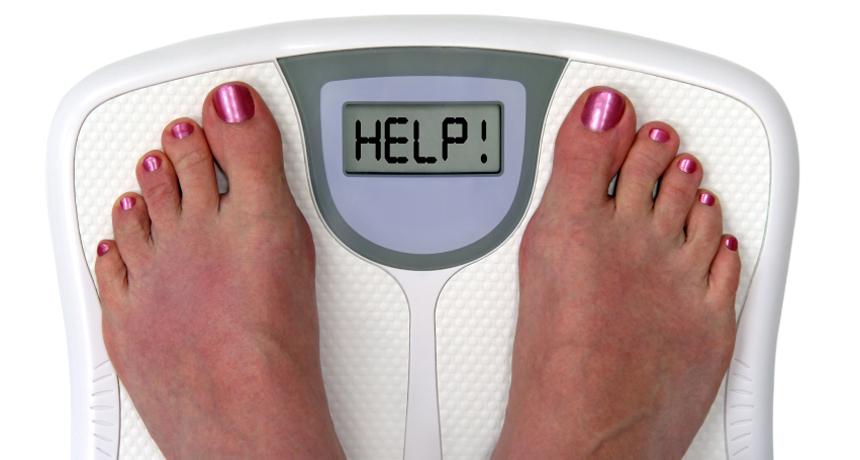
Many people worry about their weight, but eating disorders are different. These are mental illnesses, such as anorexia and bulimia. And scientists are now beginning to understand what causes them.
pixelbrat/iStockphoto
The first of a two-part series
Rae Smith remembers staring at her plate of food when she was 14. Each time she had the urge to eat, a voice inside her head said, “If you eat that, you are worthless and you are ugly and you’re stupid.” To silence it, she chose not to eat. Soon, she found herself in “complete obedience” to that voice. And she began to lose weight. For the first time in her life she felt in control of how she looked. “I could manipulate my body through restricting food,” she recalls.
Two days before her 15th birthday, Smith went to a doctor and was diagnosed with an eating disorder. Called anorexia nervosa (An-oh-REX-ee-uh Nur-VOH-suh), sufferers of this mental illness deliberately eat too little, usually while also exercising far too much.
Anorexia means “without appetite.” But its name is misleading. “Anorexia nervosa means you are hungry all the time. You just don’t eat,” says Linda Smolak. She is an expert on eating disorders at Kenyon College in Gambier, Ohio. To refrain from eating, anorexia’s victims must exert massive willpower, she explains. As a result, people with this disease are usually starving. And the irony: Sufferers still may see themselves as overweight, even when clearly and dangerously underweight.
That was the case with Smith, who lived in Kemptville, Ontario, Canada. In 2005, after receiving her diagnosis, she entered a hospital. It treated teens with eating disorders. Smith’s illness had become so severe that her hair was falling out. She was not having menstrual cycles. She often felt lightheaded. And her body was so cold that her hands and feet appeared slightly blue.
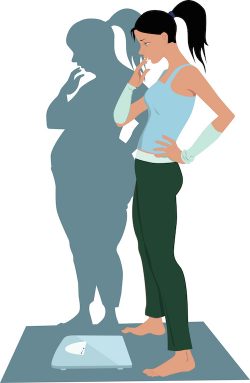
But those were just the visible signs. Her body also was so stressed that this teen was at high risk for a heart attack.
Prior to her diagnosis, Smith had been an avid soccer player. But her doctor now found she was too frail to safely play.
Following a two month-stay at the Children’s Hospital of Eastern Ontario, Smith returned home. It was in time for the holidays. But not two months after that, she slipped back into her former dieting patterns. Worried, her parents sent her back to the treatment center for more help.
This cycle of recovery and relapse happened four times over five years. Smith spent so much time in treatment that she had to repeat a year of high school. “I ended up watching all of my friends graduate,” she recalls. But eventually she graduated, went on to finish college and then got a job. Now 24, Smith feels she at last is solidly in recovery.
Still, the voice telling her not to eat is never far away. But she now recognizes that the voice is her disease speaking.
“The eating disorder is so manipulative,” says Smith. “Once it gets in there and plants that seed, it’s really hard to uproot it, even if it’s just been watered a little bit.” Smith’s mission every day is to do the opposite of what the eating disorder tells her. “Every day my goal is to frustrate the eating disorder as much as it frustrated my life over those five years.”
Smith’s story is haunting. It’s also similar to that of millions of other people. Their eating disorders are all forms of mental illness. And other mental illnesses, such as depression and anxiety, often occur together with them.
Many victims of these diseases initially feel that a strict control over their eating gives them a similar control over their fears and low self-esteem. And that reinforces their unhealthy behavior. “The eating disorder is very manipulative,” says Smith. “That’s how it gets that stronghold.”
This also is what makes eating disorders so difficult to treat.
Scientists are only beginning to understand what prompts some people to deliberately and severely limit their food intake — or the opposite, to overeat. Genetics may play some role. So can outside influences, such as friends, childhood experiences, personality and social networks. But why some develop an eating disorder, while others facing similar stresses do not, remains a puzzle.
The deadliest mental illness
In the United States, eating disorders afflict about 7 million females and 1 million males. That’s according to the University of Maryland Medical Center. Anorexia nervosa affects slightly fewer than 1 percent of people. Its symptoms usually peak between the ages of 12 and 14. Bulimia (Boo-LEEM-ee-ah) nervosa — a disorder in which someone gorges on food and then deliberately vomits it up — affects up to 3 percent of people. It tends to develop somewhat later, around the ages of 16 to 20.
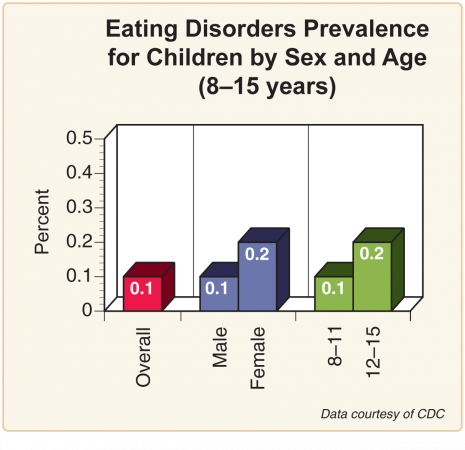
Only recently have doctors also recognized binge-eating disorder as a mental illness. Its victims eat unusually large amounts of food, often in secret. They experience a loss of control over their eating. But since they don’t vomit up the excess calories, these people can become dangerously overweight. And that puts them at high risk for other health problems. These include heart disease and diabetes. In the United States, binge-eating affects up to 5 percent of the population, usually striking around age 25.
Researchers estimate that yet another 3 to 4 percent of people have an unhealthy relationship with food. Even though these individuals do not formally meet the definition of someone with an eating disorder, they may engage in excessive dieting. Others might use laxatives to move food quickly through their bodies before its calories can be fully absorbed. These people frequently purge (vomit up) food. Some might skip meals (called fasting) for days. Such unhealthy behaviors can be early steps toward full-blown eating disorders.
Not only are eating disorders a type of mental illness, they also can be the deadliest type. One in 10 severe anorexia cases results in death, research shows. Some of its victims die from starvation. Others die from alcohol abuse or suicide.
Unfortunately, family members and friends may not recognize eating disorders as a serious illness needing treatment. This may allow unhealthy behaviors to do damage for years.
In fact, people may wrongly assume eating disorders are a lifestyle choice. That is “really such a simplistic and unfortunate characterization,” says Claire Mysko. It’s “a lot more complicated.” Mysko works as a consultant with Proud2BMe, a youth program of the National Eating Disorders Association in New York City. This organization fights to keep people from “trivializing the illness or thinking it’s a vanity issue,” she notes.
“People die from these illnesses,” she stresses. “So it’s important that we continue to fight against the stigma that’s out there … and try to bust these myths, because there still are a lot of them.”
Angela Guarda agrees. She directs the eating disorders program at the Johns Hopkins School of Medicine in Baltimore, Md. Once established, “Eating disorders are anything but a choice,” says Guarda. “A choice is something you can choose to do, or not. As an eating disorder worsens it becomes harder and harder not to do what you did yesterday.”
Danger zone
Unfortunately, social media foster the stereotype of eating disorders as a lifestyle choice.

Certain websites have become a dangerous meeting place for communities that make excessive weight loss seem appealing, even glamorous. Among these are “pro-ana” (short for pro-anorexia) and “thinspiration” or “fitspiration” groups. Thinspiration and fitspiration are pop-culture terms. Some people use these terms to advocate for healthy eating and exercise. All too often, however, they can be a disguise for promoting unhealthy dieting and exercise.
On some of these social media sites, people report how few calories they have consumed. They sometimes encourage others to exercise far too much and too often. They also commonly post images of extremely thin young women, sometimes with protruding bones. Alongside such images are sayings such as, “Be strong and get skinny,” or “No thanks, I am not hungry.”
These sayings may sound inspirational. In fact, they relay dark, somber messages.
Such social media sites can have a dangerous influence. Teens may already have a poor body image. They also may be vulnerable to eating disorders. Joining these web communities can provide a sense of belonging. “You can immerse yourself in this world of other people who have the same exaggerated focus on an unachievable body-image,” says Guarda. “The more you look at this stuff, the more likely you are to . . . increase your preoccupation with food and weight.”
Teens are especially vulnerable to these social media sites. Adolescence, for instance, “is an age at which you really start to worry about how you’re being perceived by your peers,” notes Guarda. “So appearance matters.”What’s more, the human body undergoes big changes during puberty. Girls, for instance, suddenly gain a lot of fat mass as their levels of estrogen — a hormone — begin to take off. At the same time, Guarda says, society tells these teens that to be attractive, they need to remain slim.
“So all of this creates a kind of climate that puts you at higher risk,” she says.
Illnesses may take years to fully develop
But teens are not the only victims. Eating disorders often lurk for years before they fully emerge. That was true for Sarah Robertson, a broadcast journalist for the British Broadcasting Corporation living in Staffordshire, England. Robertson competed as an acrobatic gymnast until she was 20, and then became an elite coach. She remembers first developing anxiety and fears about food when just 7.
At 15, she learned about pro-anorexia websites. “It felt like my little secret,” she recalls. “I’d kind of look at them occasionally, and then beat myself up” about it.
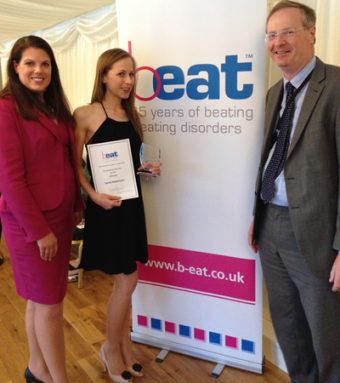
It took until she was 24 for her illness to fully blossom. That’s also when she registered for a pro-anorexia forum. Robertson began posting pictures of herself. She also began keeping an online journal. She would spend hours logging how much she had exercised, how many calories she had burned and how much weight she had lost.
“I saw it as being much like a Weight Watchers forum,” recalls Robertson, now 29. (Weight Watchers aims to help people achieve a healthy weight loss.) For Robertson, the pro-ana forum “gave me a sense of ‘These people understand me-like’ security.” Only later, looking back, could she see how destructive the sites had been.
“At the time, I would see a new rib, or a new bone, and I’d be like, ‘Yay, hip bone! Thigh bone, thigh gap, my gap’s there!’” says Robertson. (Thigh gap is a term that refers to a space between the thighs that some very thin women have when they stand with their knees and feet touching. The pursuit of a thigh gap has been popularized by social media.) “I was pretty hooked and I didn’t realize it,” she says. Fortunately, a close friend caught on to her habit of logging onto these social media sites. The friend logged her out and changed Robertson’s passwords. “If it wasn’t for her, I would still be in that trance,” says Robertson.
“Sometimes a friend is the only person who knows [about such unhealthy behaviors] for a long time,” says Smolak. “They can be very powerful helpers.”
Tumblr is a website that allows people to create their own blogs, post photos and cultivate followers. This site also is working to prevent people from using their pages on the website in harmful ways. Now, for instance, when a person searches on Tumblr for a term such as “thinspiration” or “pro-ana,” a message pops up asking: “Everything okay?” It also displays a toll-free telephone number and a hyperlink to the National Eating Disorders Association.
Next: Probing what’s behind eating disorders
Power Words
adolescence A transitional stage of physical and psychological development that begins at the onset of puberty, typically between the ages of 11 and 13, and ends with adulthood.
anorexia nervosa An eating disorder that involves self-starvation and excessive exercise to lose weight.
binge-eating disorder An eating disorder in which a person eats massive amounts of food, often in secrecy.
body image The impression individuals have about how attractive or comfortable they feel about the way their body is shaped — or how it looks — when they view it in a mirror.
bulimia nervosa An eating disorder involving overeating followed by purging (deliberately vomiting up a meal).
eating disorder An illness of the mind involving dangerously unhealthy patterns of eating and weight loss or gain.
gray matter Brain tissue made up of nerve cells.
neurotransmitter A chemical substance that is released at the end of a nerve fiber. It transfers an electrical signal to another nerve, to a muscle cell or to some other structure.
peer Someone who is an equal, based on age, education, status, training or some other features.
physiology The branch of biology that deals with the everyday functions of living organisms and how their parts function.
relapse (in health and medicine) To begin deteriorating after a period of stability or improvement.
